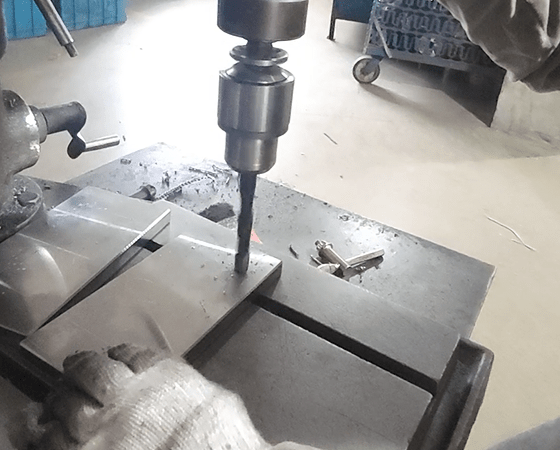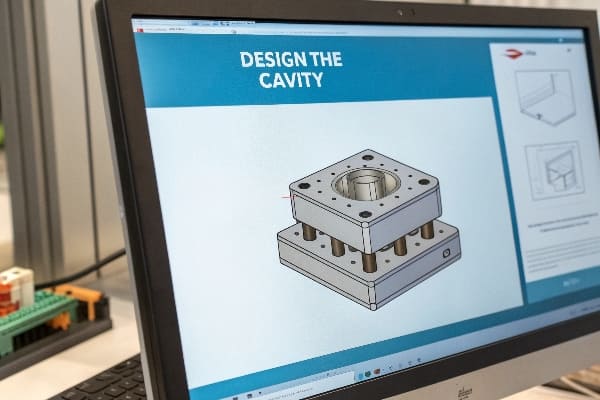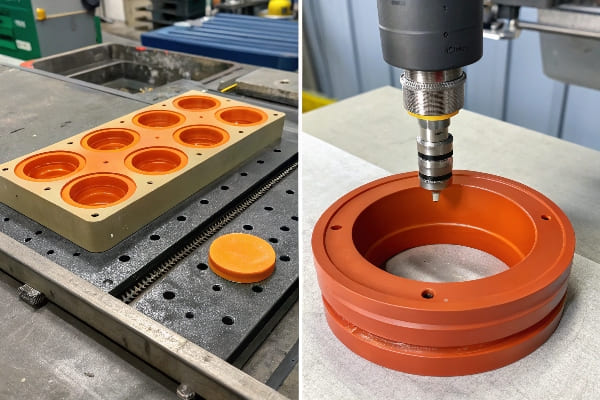Creating a mold for rubber parts is an essential process in rubber manufacturing. Whether you’re producing custom rubber seals, gaskets, or other components, designing and making an accurate mold is key to ensuring quality and consistency in the final product. In this guide, we’ll walk you through the basic steps involved in making a mold for rubber parts, including materials, techniques, and considerations.
Making a mold for rubber parts involves designing the mold cavity, choosing appropriate materials, and using techniques like compression molding or injection molding to produce high-quality parts.
Let’s dive deeper into the key steps, materials, and considerations involved in the rubber molding process to help you understand how to create a mold for rubber parts.
Step 1: Design the Mold for Rubber Parts
The first step in making a mold for rubber parts is designing the mold itself. The design should accurately reflect the final shape and size of the rubber part, considering factors like draft angles, parting lines, and undercuts.
Proper mold design1 is critical for ensuring ease of part removal and preventing defects. Consider features like draft angles and undercuts for a successful mold.
The design of the mold plays a crucial role in the efficiency of the rubber manufacturing process. Draft angles, for example, help the rubber part come out of the mold without excessive force, preventing damage. A parting line indicates where the two halves of the mold meet and is a natural feature of the mold-making process. Undercuts must also be considered, as they can complicate part removal. In some cases, special inserts or slides are added to the mold design to accommodate undercuts.
Key Design Considerations
- Draft angles: Ensure easy part removal.
- Parting lines: Mark the separation between the mold halves.
- Undercuts: Plan for additional inserts or slides for complex shapes.
- Tolerances: Ensure the mold design accounts for the precise measurements needed for the final product.
Step 2: Choose the Right Mold Material
Mold materials vary depending on the production method and the type of rubber being used. Common mold materials include steel, aluminum, and silicone, each offering different levels of durability, cost, and flexibility.
Steel, aluminum, and silicone are common materials used for rubber molds2, each offering varying durability, cost-effectiveness, and flexibility.
Steel molds are typically the most durable option, able to withstand the high pressures of injection molding and provide long-lasting results. However, they are more expensive and require more time to manufacture. Aluminum molds, on the other hand, are quicker and less expensive to produce but may not last as long under heavy use. Silicone molds are a flexible option often used for low-volume production or prototyping, as they are easier to create but may not offer the same precision or longevity as metal molds.
Mold Material Comparison
| Mold Material | Durability | Cost | Flexibility |
|---|---|---|---|
| Steel | High | Expensive | Low |
| Aluminum | Moderate | Moderate to Low | Moderate |
| Silicone | Low | Low | High |
Step 3: Select the Molding Method
There are several methods of molding rubber, each with its advantages depending on your production volume, rubber type, and desired part features. The most common methods include:
- Compression Molding: Rubber is placed into a heated mold cavity, and pressure is applied to form the part.
- Injection Molding: Rubber is injected into a closed mold under high pressure, creating precise and consistent parts.
- Transfer Molding: A combination of compression and injection molding, suitable for complex parts and high-volume production.
Compression molding, injection molding, and transfer molding are the most common methods for making rubber parts, each suited to different production needs.
Compression molding is ideal for creating large rubber parts and is often used for smaller production runs. In this method, raw rubber is preheated and placed into the mold, where it is compressed to the desired shape. Injection molding, however, is more precise and is used for high-volume production, offering greater consistency in part sizes. Transfer molding is a hybrid process that combines the benefits of compression and injection molding, allowing for more complex parts to be produced more quickly than in traditional compression molding.
Molding Methods Comparison
| Molding Method | Best For | Advantages | Disadvantages |
|---|---|---|---|
| Compression Molding | Large parts, small runs | Cost-effective, simple | Less precision, slow cycle times |
| Injection Molding | High-volume production | High precision, fast cycles | Expensive, complex setup |
| Transfer Molding | Complex parts, medium runs | Balanced speed and precision | Higher cost and setup time |
Step 4: Prepare the Rubber Material
After the mold is prepared, the next step is selecting and preparing the rubber material3. The type of rubber used will depend on the specific application requirements, including temperature resistance, flexibility, and chemical resistance. Common types of rubber for molding include natural rubber, EPDM, silicone, nitrile, and more.
Choose the right rubber type based on performance needs. Options like EPDM, silicone, and nitrile are commonly used for different applications.
The rubber material chosen must meet the performance requirements of the final part. For example, silicone is used for parts requiring high-temperature resistance, while nitrile rubber is selected for applications needing oil resistance. The rubber compound is usually mixed with additives, curing agents, and fillers to enhance specific properties. Once prepared, the rubber is ready for molding, and the molding process can begin.
Common Rubber Types for Molding
| Rubber Type | Best For | Key Features |
|---|---|---|
| Natural Rubber | General-purpose applications | High elasticity, cost-effective |
| EPDM | Automotive, HVAC seals | Weather, ozone, and heat resistance |
| Silicone | High-temperature environments | Excellent flexibility and heat resistance |
| Nitrile | Oil-resistant seals | Resistance to oils and chemicals |
Step 5: Mold the Rubber Parts
Once the mold is prepared and the rubber material is chosen, the next step is the actual molding process. For compression molding, the rubber is placed in the mold cavity, and heat and pressure are applied to cure the rubber. In injection molding, the rubber is injected into the mold under high pressure, filling the cavity precisely.
The molding process involves applying heat and pressure to cure the rubber and form the part. Techniques include compression, injection, and transfer molding.
During the molding process, the rubber material undergoes a chemical reaction that causes it to harden into its final shape. Compression molding, for instance, requires applying both heat and pressure to cure the rubber. The rubber is heated to a specific temperature, then placed in the mold, where pressure is applied to form the part. For injection molding, the rubber is heated and injected into the mold under high pressure, allowing for faster production times and higher precision.
Molding Process Flow
- Preheat the rubber material (if necessary).
- Place the rubber in the mold.
- Apply heat and pressure (for compression or injection molding).
- Allow the rubber to cure (cool down).
- Remove the part from the mold.
Step 6: Inspect the Molded Rubber Parts
After the rubber parts have been molded and cured, it's important to inspect them for quality. Check for defects such as air bubbles, uneven surfaces, or incorrect dimensions. If any issues are found, the mold may need adjustments to improve the quality of the final product.
Inspect molded rubber parts for defects like air bubbles or uneven surfaces to ensure quality. Adjust the mold as needed to improve results.

Quality control is a critical part of the rubber molding process. Inspecting molded rubber parts ensures they meet the required specifications and function properly in their intended applications. Defects such as voids, cracks, or inconsistent thicknesses can be signs that the molding process needs refinement. In some cases, mold modifications may be necessary to achieve the desired quality and performance.
Conclusion
Making a mold for rubber parts requires careful planning, precise mold design, the right materials, and a solid understanding of molding methods. By following these steps, you can create high-quality rubber parts that meet the specific needs of your application.
Footnotes:
Understanding mold design is crucial for producing high-quality rubber parts. Explore this resource to enhance your knowledge. ↩
Understanding the best materials for rubber molds can enhance your production quality and efficiency. ↩
Choosing the right rubber material is crucial for the performance and longevity of your molded parts. ↩










